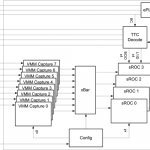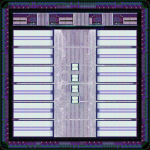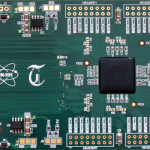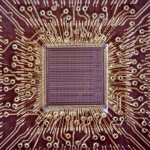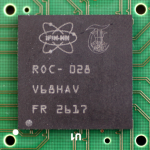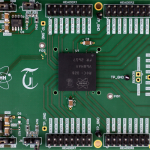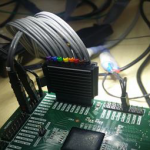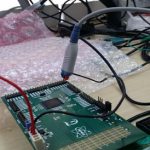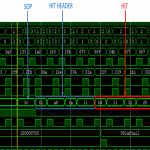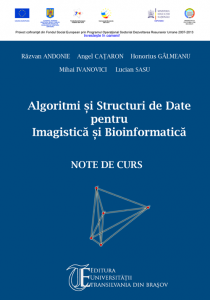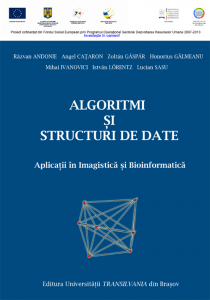ELIAC – Early Identification of Agricultural Crops using Artificial Intelligence and Sentinel-2 Data (2025 – 2026) contract no. 6PED/08.01.2025 aims at fostering of Copernicus data, more specifically multispectral images from Sentinel-2 satellites, by producing land cover maps for application in Romanian agriculture. By deploying the latest AI models and techniques, we aim at realizing the early identification of agricultural crops, as opposed to the now-established techniques which identify the agricultural crops at the end of their life-time. Early identification, i.e. identification at the beginning of the vegetation status, is a challenge due to the confusion between spectral signatures of various vegetation types/agricultural crops.
AICoRS - Artificial Intelligence-enabled Hardware Cosmic Radiation Sensor for Space Applications (2024 – 2026) contract no. 2ROMD/01.06.2024 is a bilateral project between Romania and Republic of Moldova. The project aims at designing, implementing and validating an experimental model of a cosmic radiation sensor (Single Event Upset detector) for Space applications (at TRL 4), which will be implemented in hardware, on an FPGA and it will benefit of a hardware implementation of an AI model for the real-time, on-the-fly analysis of the radiation-induced faults patterns in the satellite-embarked electronics. In the process, the young researchers involved in the project, especially the ones from UTM, will be trained and supported for their advancement in the academic careers. This will be achieved through the appropriate mentoring and planned mobilities (exchanges) of the early-stage researchers between Romania and Republic of Moldova. The project scope will be achieved in tight collaboration between the researchers from UNITBV and UTM and the complementarity of their existing infrastructure.
InnEO Space_PhD - Open Science Innovation in PhD programme through Earth Observation: towards new career skills development (2020-2023) ID 101006275 is a H2020 SwafS (Science with and for Society) project (CSA type of action). InnEO’Space_PhD project aims at preparing post-graduate candidates and early stage researchers for a successful career through modernized and transferable PhD courses based on innovation skills and employers’ needs. To achieve this, the project will enhance and develop researchers’ innovation-oriented mind-sets and skills through Earth Observation, that offers a multidisciplinary approach and numerous applications in various sectors (environment, climate change, crisis management…).
Check our online courses developed within the framework of the InnEO Space PhD project:
- SPOC Machine Learning for EO (or ML4EO) https://www.space-academy.it/course/machinelearningeo
- SPOC Summer School Soft Skill https://www.space-academy.it/course/spocsoftskill
- SPOC Startech’s Program https://www.space-academy.it/course/startechprogram
ATLAS experiment at LHC (2020-2021) contract no. 10/2020, (2016-2019) contract no. 8/2016, (2014-2015) contract no. 7/2012, partner P5. In the context of the design of the New Small Wheel system for the ATLAS experiment on the Large Hadron Collider at CERN, Geneva, our contribution is to the trigger and data acquisition system implemented on FPGA / ASIC. More precisely, we designed and implemented the Read-Out Controller (ROC) ASIC in CMOS IBM 130nm technology, for the front-end electronics of the muon detectors. Few pictures of ROC below are self-explanatory.
Brain DigiPrint (2020-2022), Determining a digital fingerprint of the human brain usable for encryption processes, based on the ERP brain potentials detected in the EEG brain signals , PN-III-P1-1.1-PD-2019-0971, post-doctoral research financed by UEFISCDI
PerPlex (2019-2020) – Human Brain Perception of the Spatio-Chromatic Complexity of Color Fractal Images, CNFIS-FDI-2019-0324, post-doctoral research
MULTICOLOR (2017 – 2018) contract no. 8031/14.07.2017, Multispectral imaging based on Multiple Color Image Acquisition using a fast CMOS digital camera (500Hz) and a National Instruments PCIe-1433 camera link frame grabber.
Analysis, Modeling and Simulation Techniques for Imagery, Bioinformatics and Complex Systems (ITEMS) contract POS-DRU/86/1.2/S/61756, 2010-2013. In the context of developing a new curriculum for a research master program, we implemented various algorithms using CUDA C/C++ on NVidia GPUs. The goal was to accelerate existing image processing algorithms and developing new ones, like color diffusion models for active contour-based image segmentation or molecule models for biochemistry applications.
The two books (in Romanian) are available for download here: http://miv.unitbv.ro/asd/
Video odometry algorithms for augmented-reality applications of navigation using mobile devices (contract with S.C. ROUTE 66 S.R.L. Brașov, 2011). Analysing the video signal and the data from various sensors allows us to reconstruct the movement path, in order to automatically build maps or building plans.
System and methodology for video signal quality assessment for MPEG-4 video streaming applications (contract with S.C. Infinity Design S.R.L. Brașov, 2008). The loss of UDP packets at network level leads to video quality degradation. The proposed system allows correlating the user-perceived quality degradation with the quality of service at network level. It can be used to study the quality of any IP-based digital video transmission for Internet providers or TV studios.
